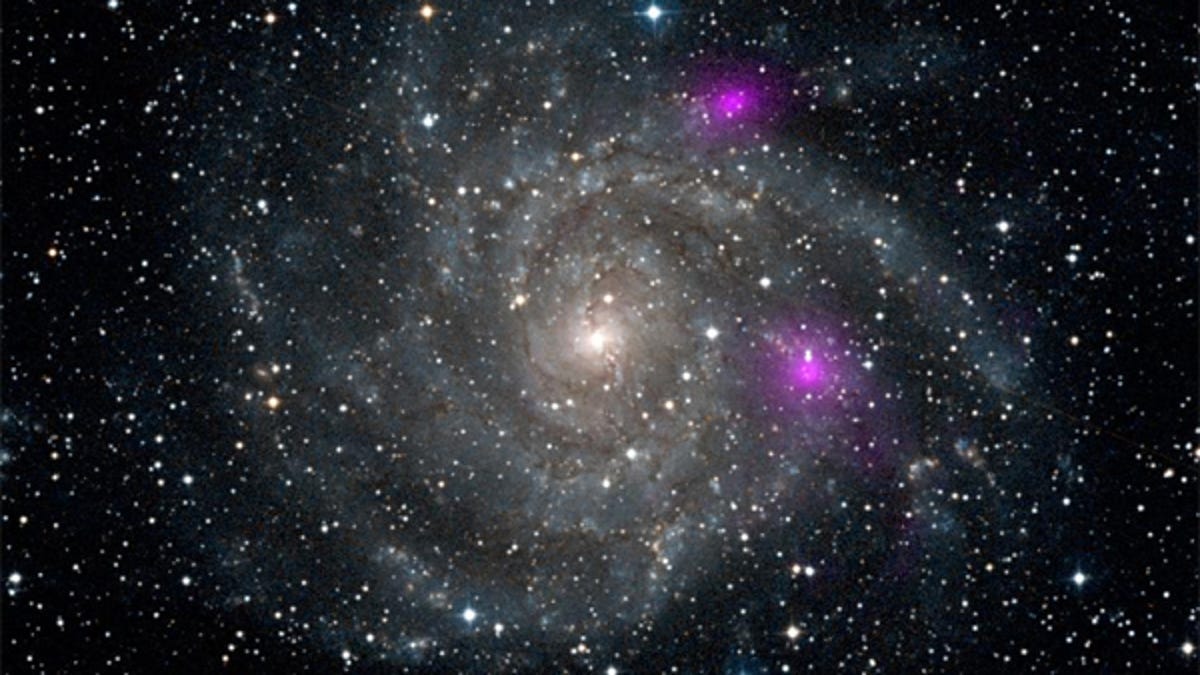Black holes glowing like eyes in the depths of space
NASA's Nuclear Spectroscopic Telescope Array has captured two black holes in a neighbouring spiral galaxy 7 million light years away.

The two black holes, glowing magenta in the arms of IC 342.
(Credit: NASA/JPL-Caltech/DSS)
NASA's Nuclear Spectroscopic Telescope Array has captured two black holes in a neighbouring spiral galaxy 7 million light years away.
The Nuclear Spectroscopic Telescope Array — or NuSTAR — is scanning our skies to analyse the X-rays emanating from other galaxies — and its latest images have captured the marvellous.
The first of the two new images show our neighbouring IC 342 spiral galaxy located in the Camelopardalis constellation — showing two brilliantly glowing black holes, otherwise known as ultra-luminous X-ray sources (ULXs). These are so named because they glow brighter than any other stellar phenomenon — excepting an active galactic nucleus, or the active core of a galaxy; and, even though we call them "black holes", no one is quite sure what causes them.
"High-energy X-rays hold a key to unlocking the mystery surrounding these objects. Whether they are massive black holes, or there is new physics in how they feed, the answer is going to be fascinating," said Fiona Harrison, NuSTAR's principal investigator at the California Institute of Technology in Pasadena.
The other image shows Cassiopeia A, a supernova remnant located in the Cassiopeia constellation 11,000 light years away. According to NASA:
The colour blue indicates the highest-energy X-ray light seen by NuSTAR, while red and green signify the lower end of NuSTAR's energy range. The blue region is where the shock wave from the supernova blast is slamming into material surrounding it, accelerating particles to nearly the speed of light. As the particles speed up, they give off a type of light known as synchrotron radiation. NuSTAR will be able to determine for the first time how energetic the particles are, and address the mystery of what causes them to reach such great speeds.
Using this image, NASA hopes to better understand how stars explode.
"These new images showcase why NuSTAR is giving us an unprecedented look at the cosmos," said Lou Kaluzienski, NuSTAR program scientist at NASA headquarters in Washington. "With NuSTAR's greater sensitivity and imaging capability, we're getting a wealth of new information on a wide array of cosmic phenomena in the high-energy X-ray portion of the electromagnetic spectrum."
Via www.nasa.gov

